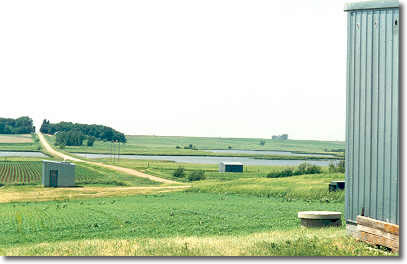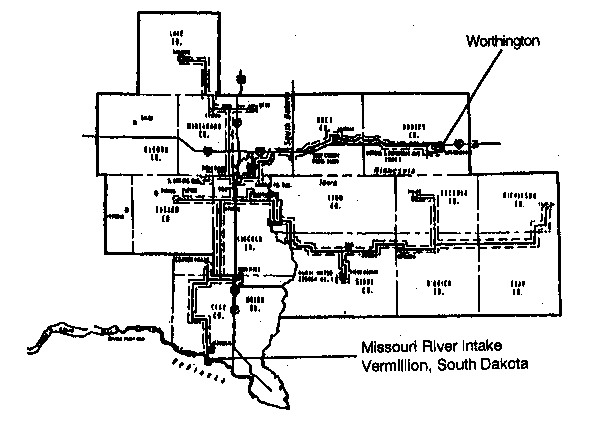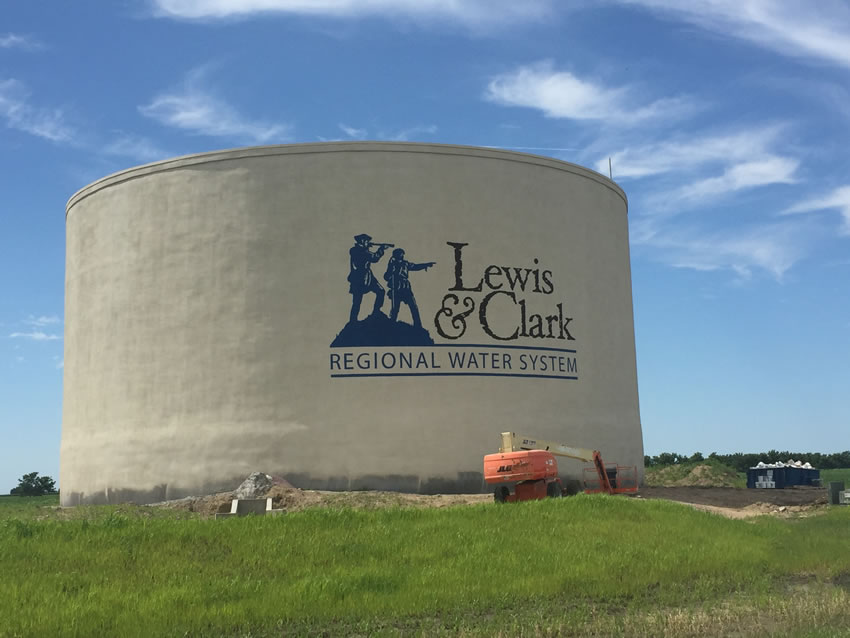Drinking Water Protection
- Drinking Water Protection Home
- About Us
- A-Z Index of Contaminants in Water
- Community Public Water Supply
- Drinking Water Grants and Loans
- Drinking Water Institute
- Drinking Water in Schools and Child Cares
- Drinking Water Revolving Fund
- Laws and Rules
- Noncommunity Public Water Supply
- Source Water Protection
- Water Operator and Certification Training
- Drinking Water Protection Contacts
Related Topics
- Annual Reports
- Drinking Water Risk Communication Toolkit
- Drinking Water Protection External Resources
- Fact Sheets
- Forms
- Invisible Heroes Videos: Minnesota's Drinking Water Providers
- Noncom Notes Newsletter
- Sample Collection Procedures (videos, pictures, written instructions)
- Waterline Newsletter
Related Sites
- 10 States Standards
- Clean Water Fund
- Health Risk Assessment – Guidance Values and Standards for Water
- Minnesota Well Index
- Water and Health
- Wells and Borings
Environmental Health Division
Worthington Explores Lewis and Clark
From the Spring 1996 Waterline
Quarterly Newsletter of the Minnesota Department of Health Public Water Supply Unit, Waterline
A complete list of feature stories can be found on the Waterline webpage.

Water is easy to find in most parts of Minnesota. Known for its many surface sources, the Land of 10,000 Lakes also has an abundant supply of groundwater. But this phenomenon isn’t universal across the state. The southwestern counties have more in common with adjacent states to the west than their wetter neighbors throughout the rest of Minnesota.
The city of Worthington, in the southwestern corner of Minnesota and lying directly on the border of the Missouri River/Mississippi River watersheds, is well aware of the importance of water. Worthington’s present well field, surrounded and fed by man-made Lake Bella, seven miles south of the city, provides more than 95 percent of drinking water used by the city’s more than 10,000 residents and two major industries, Monfort Pork and Campbell Soup Company.
In normal times, the Lake Bella well field provides the city with an adequate supply of water. But the wells have an average depth of less than 100 feet, causing not just concerns over potential contamination threats but making them sensitive to drought conditions. During the dry spell of 1988, static levels in the wells dropped considerably; the drought reached the point that one city well became unusable.
Conservation has always been a way of life for Worthington, not just during the droughts. Industry, residents, and the utility itself are already efficient in water usage. Monfort Park uses less water per hog at its Worthington plant than any other of its U.S. facilities. Residential usage is only 75 gallons per day per capita. And with an ongoing leak detection program, the utility’s unaccounted water usage is 7.5 percent, well below the national average. In addition, renovations to the treatment plant in 1992 made it possible to reclaim and treat over 90 percent of the water used to backwash the filters.
Nearly 150 test wells were drilled at four different sites before the current well field was developed in 1963. Since that time, the city has constantly been on the lookout for additional well fields with search intensifying in recent years. Two new wells were added in 1989, and Worthington is now trying to develop an aquifer on the northeast side of town that could yield 1.4 million gallons per day (MGD) on a long-term basis. The wells would also be almost twice as deep as those at Lake Bella.
However, there are still “a lot of ifs” with the potential new well field, according to Mike Raverty, Worthington’s water superintendent. One concern is the sulfate content of the aquifer, which is possibly too high to bring it down to acceptable levels by blending it with water from existing wells.
As the city continues to explore new sources, it has also turned to a project named after two of America’s most famous explorers. The Lewis & Clark Rural Water System Project will divert water from the Missouri River at Vermillion, South Dakota. The water will be treated at facilities there, then delivered to project members in South Dakota, Iowa, and Minnesota.
The Lewis & Clark Rural Water System was organized in April of 1990 with the goal of developing alternative and/or supplemental water supplies for the benefit of its members. It originally consisted of members only form southeastern South Dakota; subsequent interest in the project was so great, however, that the scope was expanded to include communities and rural water systems from northwestern Iowa and southwestern Minnesota, as well. The city of Luverne, Rock County Rural Water System, and Lincoln-Pipestone Rural Water System are the other Minnesota partners besides Worthington in the project. A total of 22 systems, serving approximately 180,000 people in the three-state area, are Lewis & Clark members.
The estimated cost for the entire project is $272 million. (It is anticipated that a federal grant will cover 80 percent of the costs, and, in Minnesota, a state grant will cover 10 percent; the remaining will be borne by individual partners.) More than half of the total capital cost will be for the construction of the distribution system, which will encompass 406 miles of pipeline.
The treatment plant itself will cost approximately $30 million. The water will be treated to ensure sulfate concentrations of less than 250 milligrams per liter (mg/l), total hardness of 8-12 grains per gallon, and total dissolved solids of less than 500 mg/l.

Diagram indicates the scope of the Lewis & Clark Rural Water System.
The project’s intake system will withdraw a maximum of 23.5 million gallons per day, which represents less than .2 percent of the median annual flow in the Missouri River at nearby Yankton, South Dakota. The water withdrawn will be for potable use only, not for irrigation.
Nearby all of the water will eventually return to the Missouri River, although Worthington, which straddles the delineation between watersheds, will discharge its water into the Mississippi River basin. (This is no different than what is currently being done since the Lake Bella well field is on the Missouri side while the city’s wastewater plant is on the Mississippi side.)
When Worthington became a partner in the project in 1990, it reserved 1.73 million gallons per day, which is 7.4 percent of the system capacity. This allocation, made on an estimate of future need, was based on 50 percent of the city’s peak usage at the time. Since that time, however, their water usage has increased substantially, in large part because of the growth of Monfort Pork and Campbell Soup Company. Their peak usage is 4.2 MGD, far more than twice their projected allocation from Lewis & Clark.
It is because of this increased water use that the Lewis & Clark Project has become so important to Worthington. But Raverty emphasizes that the project is intended as “a supplemental solution, not as our main source of water.” The existing well field will continue to be Worthington’s primary supply, and the search for additional local sources of water will continue.
A report issued by the city of Worthington about its participation in the program concludes that, “Our goal, and our obligation, is to provide our customers with a high quality and reliable supply of fresh water at the lowest possible cost, consistent with sound environmental practices, and to make the necessary preparations to meet the future needs of our service area.
“It is the feeling of Worthington Public Utilities that the Lewis & Clark Rural Water System Project is currently the only real alternative to achieving this goal.”
Of Interest
Lewis and Clark Regional Water System Nearly Complete in Minnesota
Go to > top.
